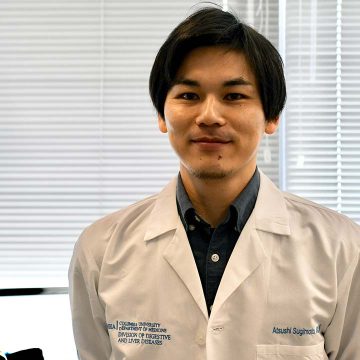Atsushi Sugimoto, PhD

Irwin M. Arias, MD Postdoctoral Research Fellowship
$25,000 over one year
Columbia University
Role of hepatic stellate cells in liver homeostasis, injury and regeneration
Mentor: Robert F. Schwabe, MD
Hepatic stellate cells (HSCs) are considered as the main scar-producing cell type of the liver and contribute to the development of liver fibrosis and liver cirrhosis in most types of chronic liver disease (CLD), including fatty liver disease, alcohol-associated liver disease and hepatitis B- and C associated liver disease. Accordingly, current therapeutic approaches for CLD include drugs targeting HSCs. However, functions of HSC in the healthy liver remain only poorly understood and it is likely that HSCs not only contribute to CLD but also provide beneficial functions. I hypothesize that HSCs regulate the functions of hepatocytes, the main functional unit of the liver with key roles in metabolism and detoxification. Based on abundant preliminary data, I hypothesize that HSCs have a key role in controlling liver injury, liver metabolic functions and regeneration and therefore contribute to nearly every aspect of the liver’s well-being in health and disease. Here, I will determine how HSCs regulate liver functions by analyzing how genetical removal of HSCs or removal of a key protein, termed Rspondin3, from HSCs affects the liver in different liver disease and liver injury models as well as in cell culture studies. The proposed studies will provide the evidence for proposed HSC-hepatocyte crosstalk and shift current paradigms that focus on HSCs as a disease-promoting cell population to a more comprehensive view that integrates both protective and disease-promoting roles of HSCs and will provide a basis for novel treatment approaches.
Last updated on January 24th, 2024 at 11:49 am